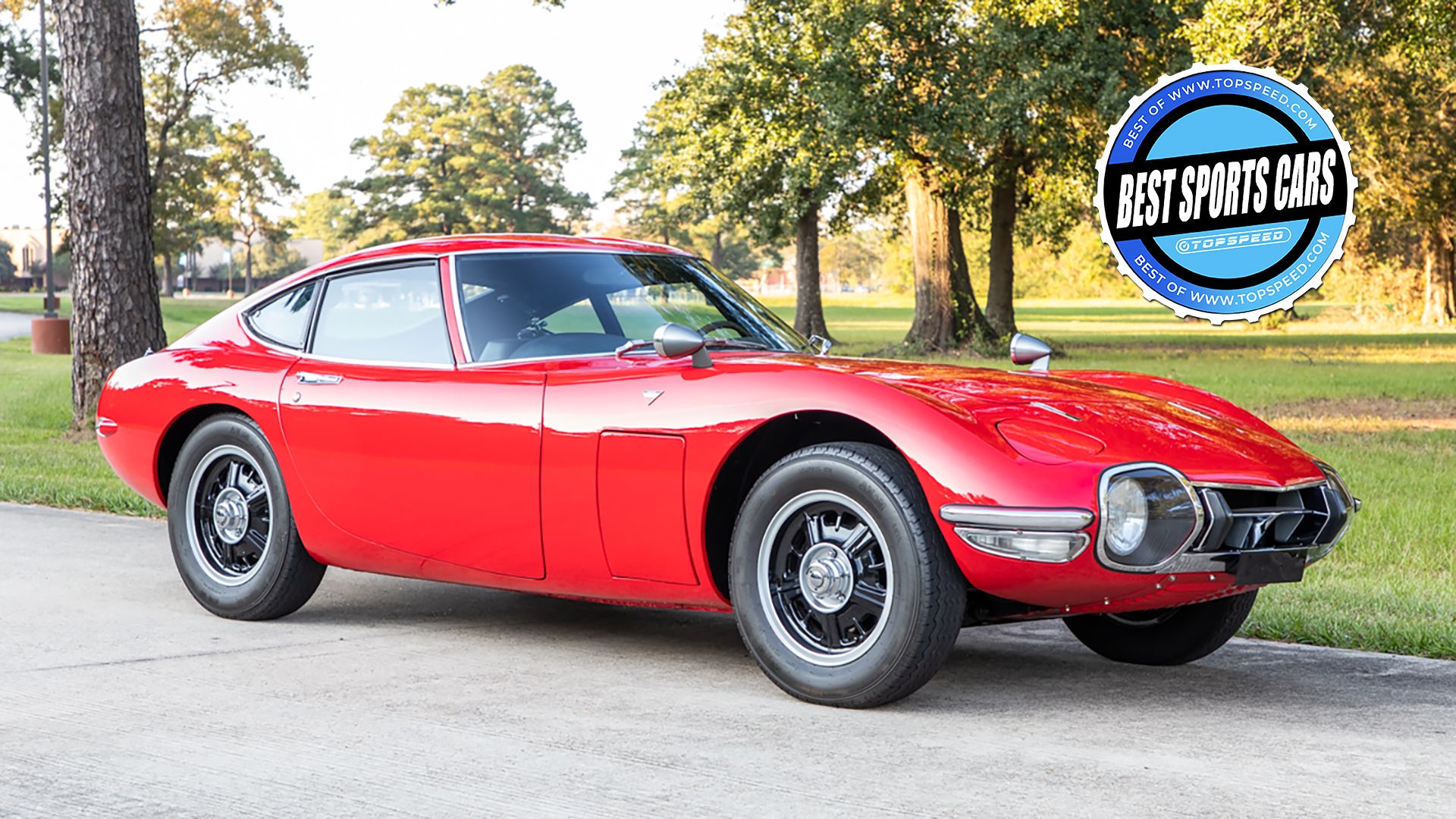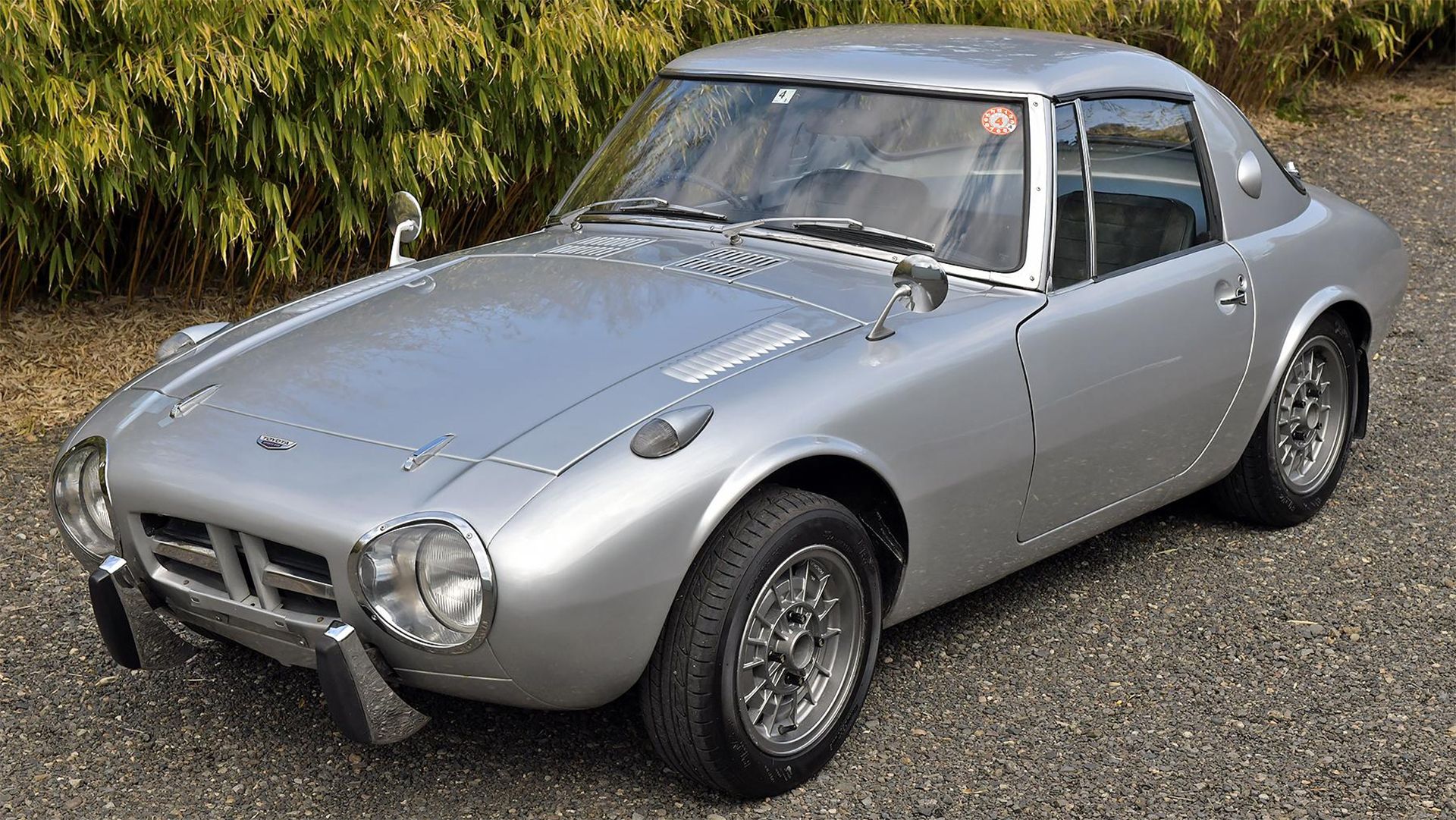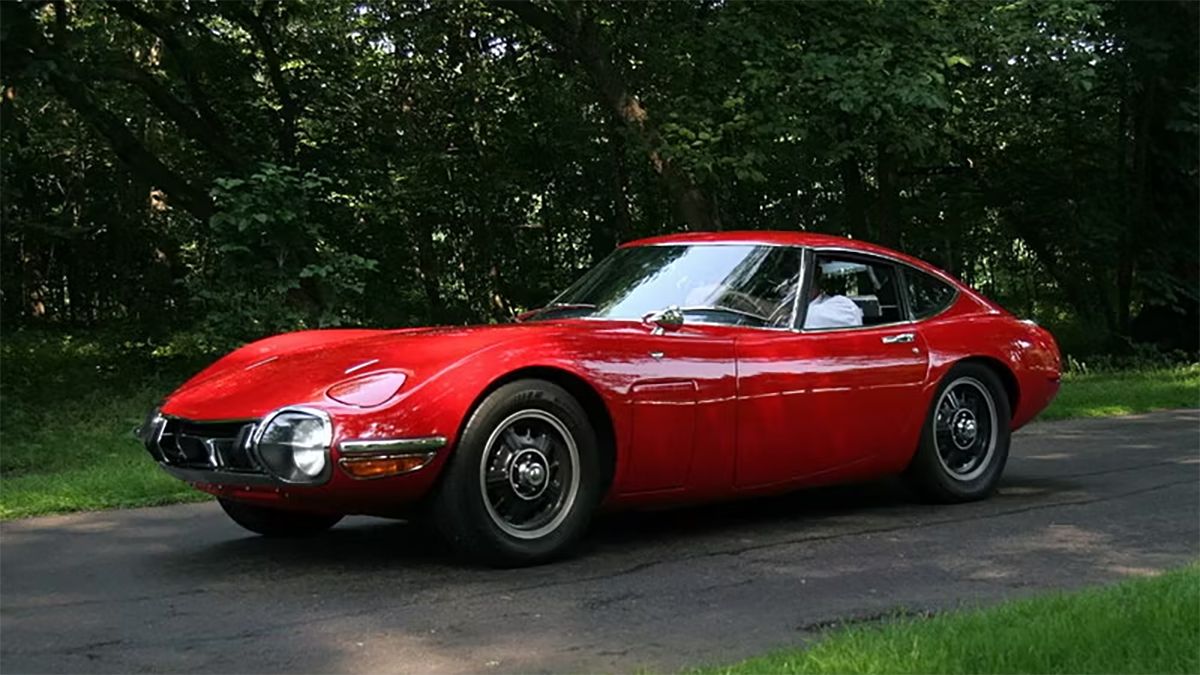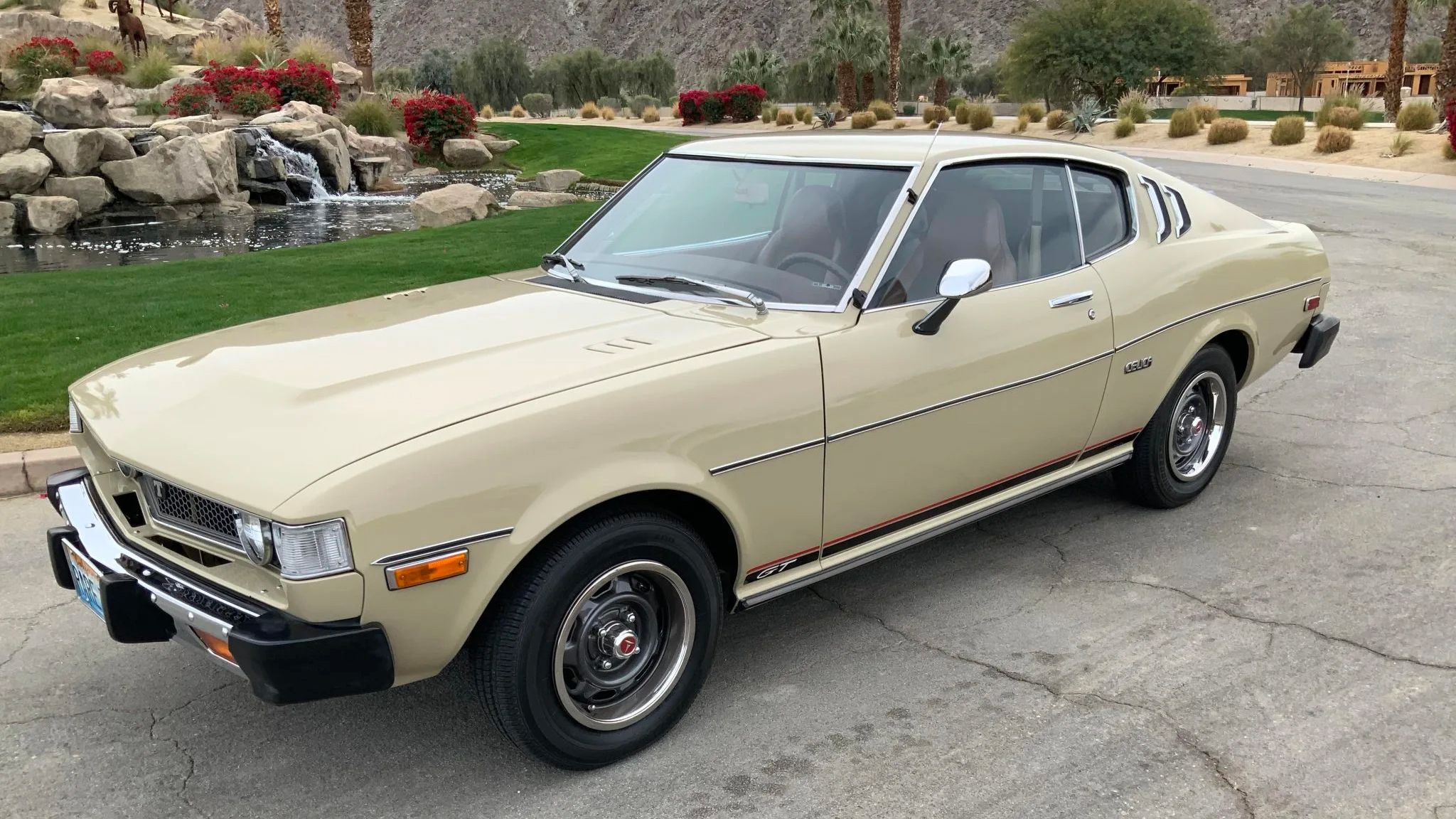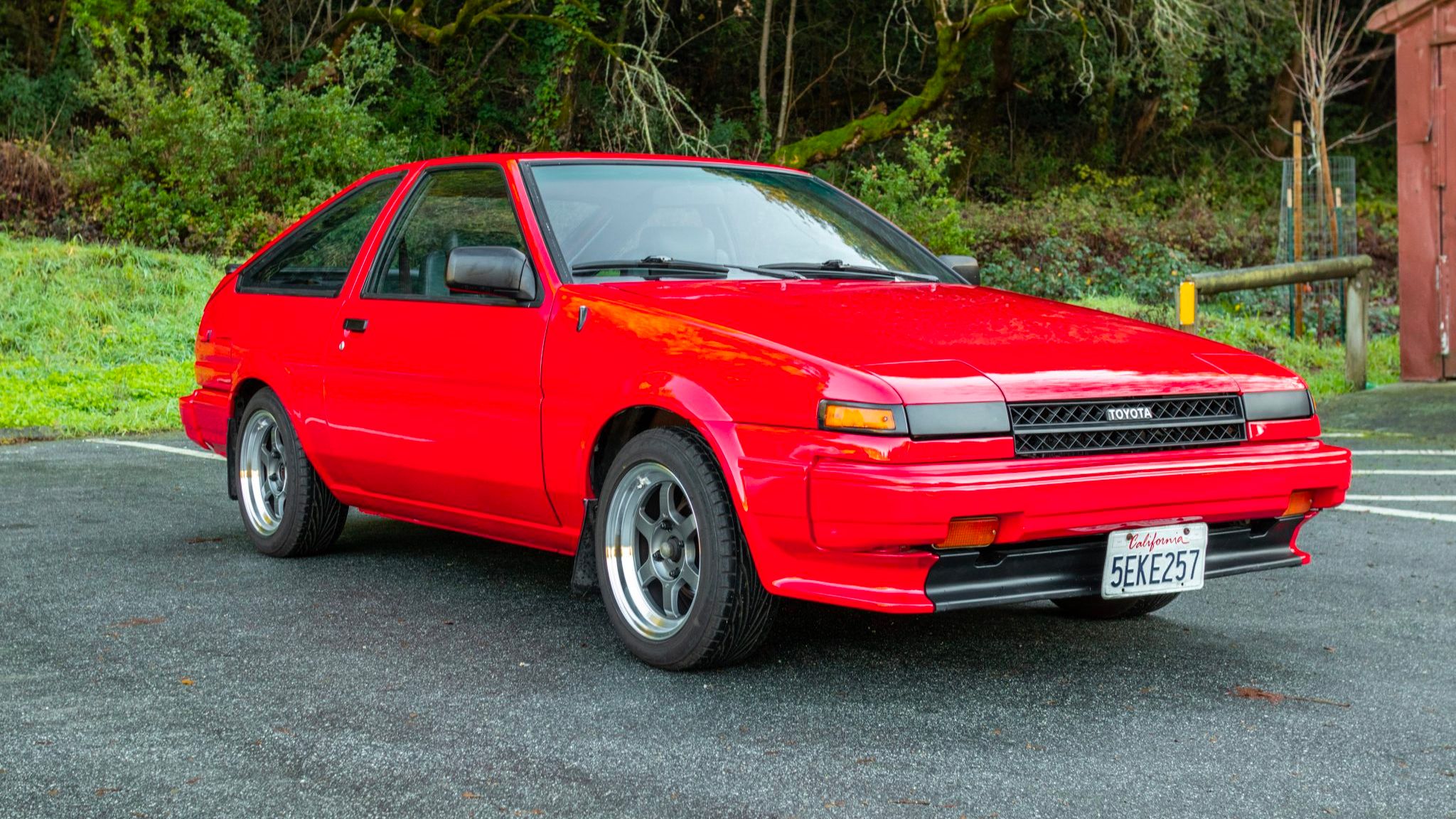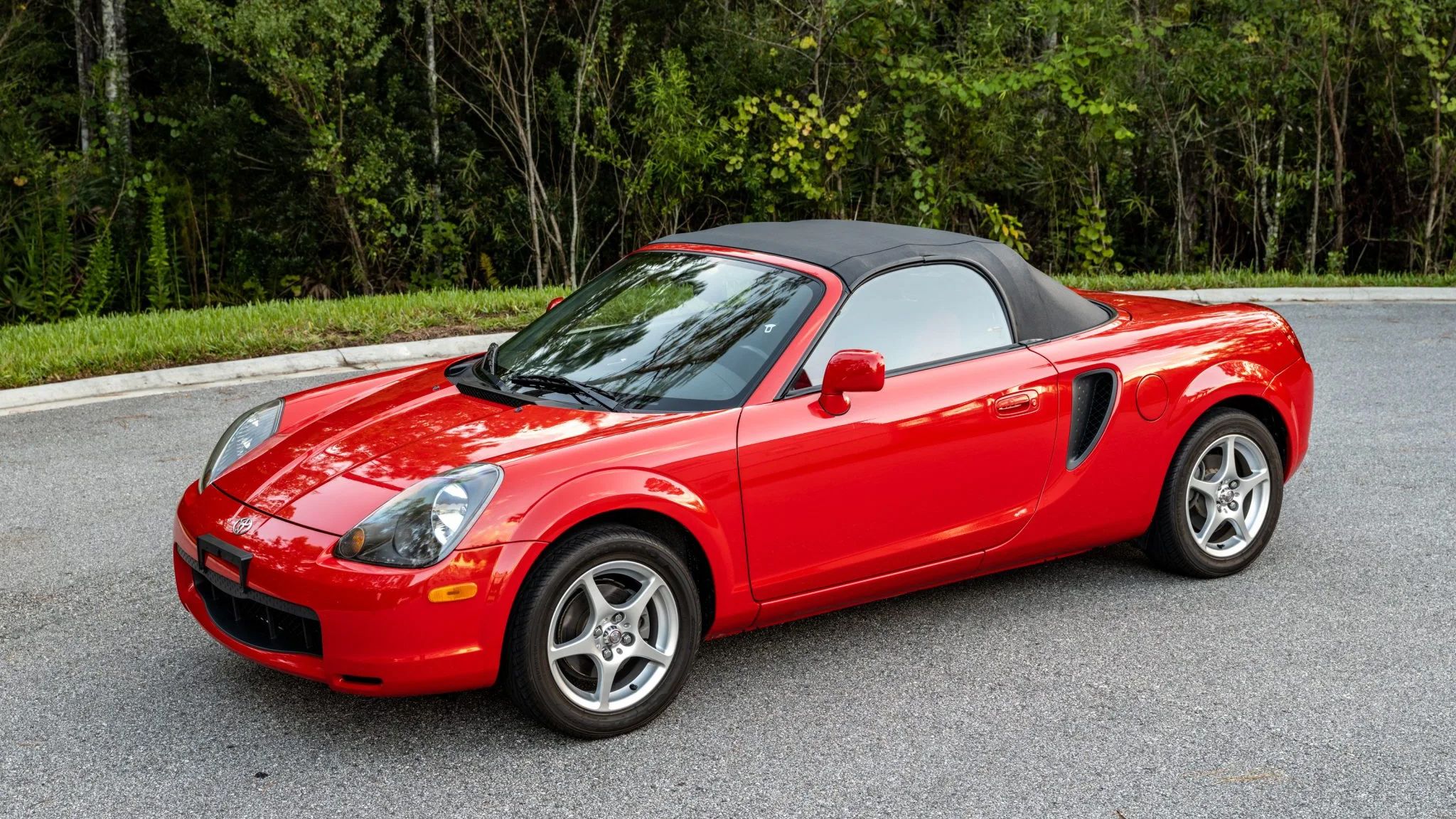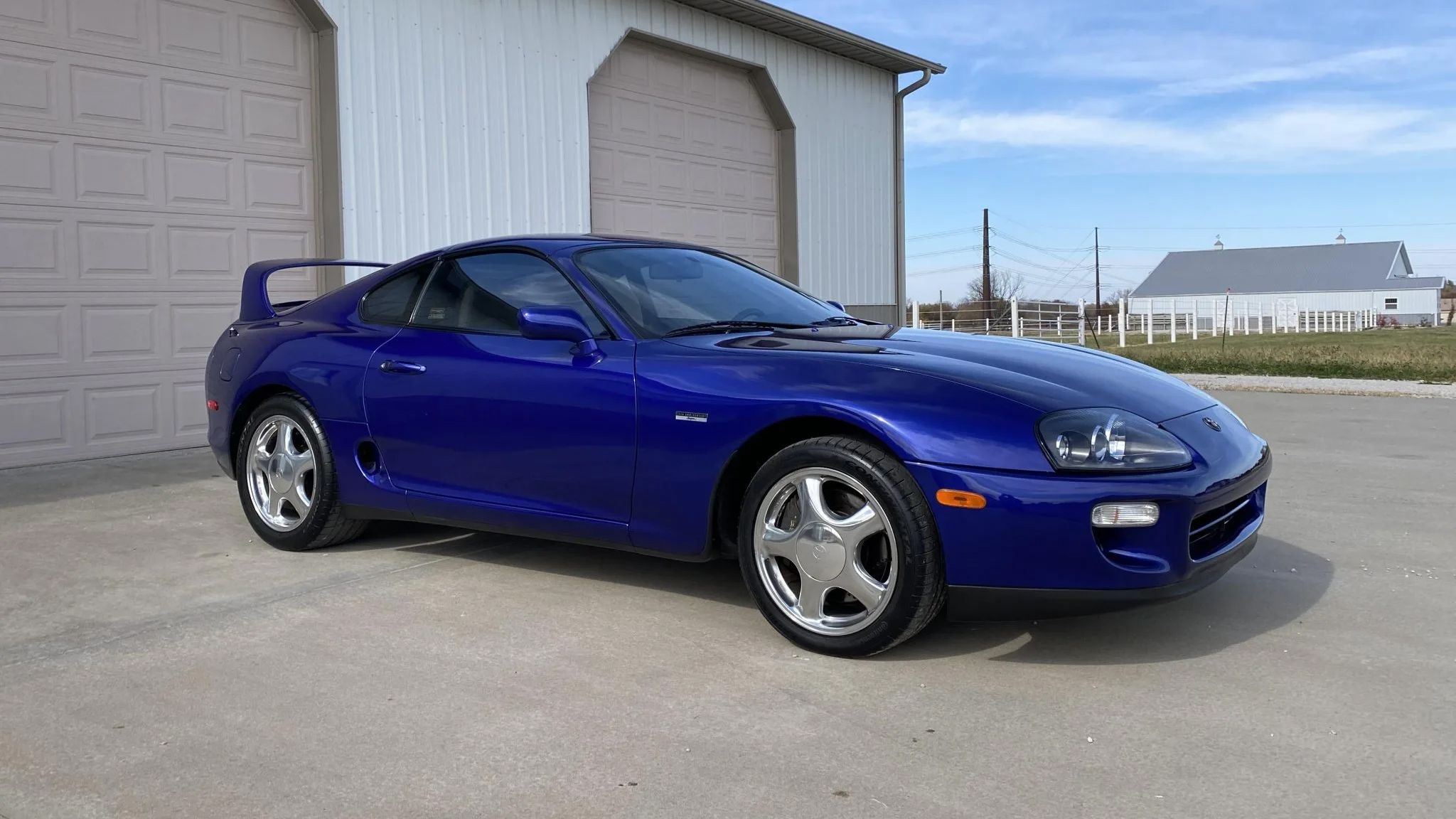For most people, the Toyota brand is synonymous with family vehicles that are reliable, efficient, and affordable, and there's the off-road crowd that will immediately throw up models like the Toyota 4Runner SUV or Tundra Pickup truck. There are those of us, however, that know that Toyota has a rich heritage of sports cars. Sure, we can talk about the modern GR Yaris or even the GR Corolla; maybe you're thinking of the Mk iV Supra that saw a huge rise to stardom after starring in the now-cult classic Fast & Furious. The truth is, however, that Toyota's sports car history runs much deeper than that. In fact, Toyota's sports car history goes all the way back to the 1960s.
Over the years, Toyota has released a number of noteworthy sports cars, and while the current Supra and GR86 are great in their own right, none of them would exist as we know them today if it wasn't for all the cars that came before them. It all started with the Toyota Sports 800 which sits at the top of this list.
1 Toyota Sports 800: The First True Toyota Sports Car
The Toyota brand may have gotten its start way back in the late-1930s, but it wasn't until April of 1965 when the brand's first sports car went into production. The Sports 800 was a small, almost Britsh-like car that featured a long hood, short tail, and a two-cylinder engine that's probably smaller that any engine you've ever seen. That's right; the car that ultimately led to amazing cars like the Toyota Supra started out with a 0.79-liter, two-cylinder engine that put out just 44 horsepower. Over the course of four years of production, Toyota produced a whopping 3,131 examples, and you can occasionally find them up for sale in decent condition even today. In case you're wondering, official 0-60 mph times are hard to come by, but according to Hemmings, the Sports 800 had a top speed of 90 mph.
2 Toyota 2000GT: Toyota's First Sporty Grand Tourer
The legendary Toyota 2000 GT is so beautiful that it often ties with the E-Type Jag in the looks department. Unveiled at the 1965 Tokyo Motor Show to compete with the big dogs and for a first crack at a sporty grand tourer, Toyota did a fine job. It was powered by a 2.0-liter inline-six, borrowed from the Toyota Crown sedan. However, it was tuned by Yamaha who gave the engines new internals like three twin-carburetors and managed to take the total power output to 150 horsepower and 129 pounds-feet of torque.
In typical Toyota fashion, the 2000GT suffered from a classic case of over-engineering. For instance, it was the first Toyota model to feature disk brakes on all four corners, a five-speed manual gearbox and was fitted with a proper LSD. As a result, the GT was capable of doing 0-60 mph in just 8.6 seconds and can achieve a top speed of 135 mph, thanks to a low curb weight of just 2,,469 pounds. But unfortunately, this cutting-edge car was too expensive for Toyota, which combined with slow sales meant they had to kill the 2000GT after a short three-year production run during which only 351 units were produced, and only 62 of which were left-hand drive models for the U.S. market.
Even Carol Shelby was involved with the race-going 2000 GTs that he reworked to produce 210 horsepower that managed to finish right behind Porsche and Triumph. One such racecar recently fetched a record $2.54 million, and even the regular 2000 GT road cars are steadily rising in value due to their exclusivity with well-maintained examples fetching close to a million dollars a pop.
3 Toyota Celica GT2000 Liftback: Inspired By The Ford Mustang
The first-gen Toyota Celica was unveiled at the 1970 Tokyo Motor Show. Launched initially as a two-door hard top, the Toyota sports car in question is the liftback version of the same car that only had a three-year production run from 1973 to 1974. Designed as a replacement for the Toyota Sport 800, the design is heavily inspired by American cars of the time like the Mustang and Falcon, which is why even Toyota added the liftback to the Celica as it was a popular body style in the United States at the time. Speaking of the North American market, the Celica GT Liftback (RA29) was only offered with a single-cam, 2.2-liter 20R engine while the JDM versions got a whole host of engines ranging from 1600cc up to 2000cc.
The engine made a very modest 95 horsepower and 122 pound-feet of torque. and was mated to a period-correct five-speed manual transmission. The entire car weighed just about 2,600 pounds, and combined with its sleek liftback design, this meant it could just hit a top speed of 110 mph on a good day. Despite the somewhat obvious lack of power and the lightweight, the car had great agility and handling characteristics. With all these great attributes and styling that beautifully captures the essence of the 70s, the Celica GT2000 Liftback has been gaining popularity among collectors, so expect to pay upwards of $25,000 for a mint example and as low as $5,000 for a decent one.
4 Toyota Celica Supra: The Underrated And Often Forgotten Toyota Sports Car
From one Celica to the next, let's talk about the underrated and forgotten JDM Classic known as the Toyota Celica Supra. Launched back in 1978, it was largely based on the Celica Liftback but had noticeably bigger dimensions and received other minor designs and structures, all of which were made for the sole purpose of accommodating a larger inline-six engine under the hood. So, the "Supra" name was originally used as the name for the highest-end trim level of the Celica, which in JDM spec, was called "Celica XX" before it became a stand-alone model in 1983 when they split the Celica and the Supra.
So, this first-gen car was a thorough-bred Toyota sports car, and in the States, a range of engines was offered. The entry-level engine was a 2.0-liter SOHC inline-six that shared its basic block with the Toyota 2000GT and produced 123 horsepower, while later models received a 2.8-liter inline-six with 145 horsepower. Transmission options included a four-speed torque converter auto or a five-speed manual, and even though the car was fitted with a live rear axle to keep the costs down, it did come with a pretty decent feature list which included all-around disk brakes, and an optional LSD.
As a result, the Celica Supra handles the twisty bits with the utmost composure, something that just can't be said for American cars from the same era. But, the better build quality and handling weren't enough to keep up with the powerful Mustangs and Camaros of the time and that led to sub-par sales figures. It was discontinued after a brief three-year production run. These models go for as high as $40,000 in the used market.
5 Toyota Corolla AE86: The Most Legendary Toyota Sports Car
Officially known as the Toyota Corolla GT Coupe, but commonly identified by its chassis code "AE86", this particular version is, without a doubt, the most sought-after Corolla to date (not counting the newly launched GR Corolla). And, the biggest reason for its popularity is the rear-wheel-drive layout, and also the fact that it featured as the hero car in famous anime series Initial D. Yes, RWD in a Corolla was made between 1983 and 1987 because when Toyota set out to make a sport version of the fifth-generation Corolla which already existed in an FWD four-door sedan and hatchback form, they decided to make it "right wheel drive" and give it an all-new RWD chassis accompanied by a properly zippy engine. Speaking of which, the Toyota Corolla AE86 was powered by a transversely-mounted 1.6-liter 4A-GE engine featuring twin-overhead cams and electronic fuel injection. As a result, it made a respectable 130 horsepower and 109 pound-feet of torque.
Power was channeled via a five-speed manual gearbox, and combined with the light, a two-door design that weighed in at just under 970 kilos, the AE86 was capable of achieving a top speed of 130 mph. The Corolla GT Coupe was also a top choice for drifting and other forms of racing including the British touring car - even rally - and is credited by many as the car that created the flamboyant sport of drifting. These cars are now highly sought-after collectibles but continue to be cheap to work on. But good luck finding an all-original example that is nearly impossible to come by.
6 Toyota Soarer Turbo Mk.3: A Lexus SC In Disguise
The Toyota Soarer Turbo, also known as the Lexus SC, was a subtle and elegant-looking coupe, and the model in question is the third-generation made between 1991 and 2000. Apart from the grown-up looks and luxury, the cars carrying the "turbo" badge came with a special engine - the 2.5-liter 1JZ-GTE inline-six with two turbos strapped for good measure. And, this setup came mated to a five-speed manual or a four-speed automatic gearbox.
While Toyota and Lexus SC offered a V-8-powered Soarer as well, the turbocharged version quickly gained fame among tuners and enthusiasts, thanks to the engine which, in stock form, made 276 horsepower and 279 pound-feet of torque. However, it was the engine's robust nature that made it capable of handling high-boost pressures on stock internals which lead to its success among the tuner community.
7 Toyota MR2 Mk.3/ Toyota MR-S: The Last Hurrah Of The Legendary Sports Car
Unveiled to the public back in 1984, the Toyota MR2 was a revolution in sports car design and a packaging marvel. The name MR2 stands for "Mid-engine, Rear-wheel-drive, 2-seater", and we will be looking at the coveted Mk.3 Toyota MR2 which was in production from 1999 to 2007. After setting new benchmarks for handling and balance in the entry-level sports car market, the third-gen model set about to improve the tried and tested formula. The all-alloy 1.8-liter DOHC unit code-named the 1ZZ-FE came with variable valve timing and DOHC. As a result, it made a healthy 138 horsepower and 127 pound-feet of torque. With an extremely low curb weight of under a ton, the MR2 had a great power-to-weight ratio and was capable of an impressive 0-60 MPH in around eight seconds and a top speed just shy of 130 mph. The 1ZZ engine is also famous in the tuner community for its high tolerance to modifications, which, combined with its agility, lead to the MR2's success in motorsports.
8 Toyota Mk4 Supra: As Legendary As The Nissan GT-R
Not only is it one of the best Toyota Sports cars ever made, but it is also considered one of the best sports cars of all time. The Mk.4 Toyota Supra is a pop culture and tuner icon that along with the Nissan GT-R range, is the face of the JDM sports cars culture. Originally launched as a high-performance variant of the Celica, the Supra became a stand-alone model in 1986, and in 1993 the iconic Mk.4 Supra was launched.
The Supra's party piece has to be its 2JZ engine which is a star in its own right. The Mk.4 Supra, came in two flavors: first was the naturally aspirated 2JZ-GE 3.0-liter inline-six engine that made 220 horsepower and 210 pound-feet of torque, and the second configuration was the 2JZ-GTE which was the same inline-six, but with two turbos strapped to it which pushed the power output to 321 horsepower and 315 pound-feet of torque although the power figures varied slightly depending on the region.
Out of the box, this RWD sports car was capable of doing the 0-60 mph sprint in just 4.6 seconds and the quarter-mile time was an impressive 13.1 seconds. But, it’s the seemingly limitless tuning potential that lead to the popularity of Supra, especially amongst the tuner community, which is why used Mk.4 Supras can fetch anywhere between $150K to $300K in the used car market.
9 Toyota GT86: Designed For Corner Carving With Precision
Built-in collaboration with Subaru, the Toyota GT86 was an entry-level 2+2 sports car, designed to take on the mighty Mazda Miata in the budget sports car segment. Made between 2012 and 2021, the GT86 (also known as "86"/"FT86" in some regions) brought back the classic front-engined RWD platform at an affordable price point and made use of clever engineering to keep the costs down with minimal compromises. As a result, the GT86 was powered by the Subaru-sourced 2.0-liter, naturally aspirated Boxer engine which improved the center of gravity, courtesy of the flat-four engine configuration. It turned out to be cheaper than using a smaller-capacity turbocharged engine.
This setup came mated to either a six-speed manual or a six-speed TQ automatic. The engine was rated to produce 197 horsepower and 151 pound-feet of torque sipping 98 RON fuel. Most models even received an LSD, which, with the car's low curb weight gave it very predictable handling and a 0-60 mph time of just 6.0 seconds. In the end, the GT86 was a sales success and despite flaws in its power delivery, the GT86 and Subaru BRZ gained worldwide fame for mastering the simple sports car recipe.
10 Toyota GR86: Entry-Level Sports Car Perfection Evolved
Following the success of the GT86, Toyota and Subaru teamed up once again to make a sequel to their near-perfect entry-level sports coupe in the form of an all-new Toyota GR86. On the surface, the GR86 looks like a mild evolution at best, but under the skin is where most of the worthwhile changes have been made. Starting with the engine, the car comes with an all-new 2.4-liter naturally aspirated boxer-four that makes 228 horsepower and 184 pound-feet of torque. But, more importantly, it gets rid of the major flat spot in the power band that plagued its predecessor.
The six-speed manual continues to be the standard offering with a six-speed auto available at extra cost. In addition, the new chassis is stiffer, and in combination with the Michelin Pilot 4 tires that come as standard in most regions, the new GR86 takes handling and agility to a whole new level. The revised styling and the updated interiors with new tech such as updated infotainment and a fully digital gauge cluster with tons of interior space make this a very usable and well-rounded entry-level sports car.
11 Toyota GR Supra Manual: The Rebirthed Supra Everyone Was Waiting For
The GR Supra is the successor to the legendary Mk.4 Supra. Developed in collaboration with BMW, the new Supra shares most of its underpinning with the Z4, including its drivetrain that comprises two engine options, the first is a 2.0-liter turbocharged inline-four with 255 horsepower and 266 pound-feet of torque, and the other, a full-fat 3.0-liter turbocharged DOHC inline-six that makes 335 horsepower and 368 pound-feet of torque.
The original version launched in 2019 also shared the BMW Z4's eight-speed ZF sourced TQ automatic, but this engine and gearbox combo infuriated quite a few purists for its lack of a manual option like its predecessor and enthusiasts also accused the Supra of being nothing more than a rebadged BMW. So a GR Supra with a Manual transmission was inevitable.
In retaliation, Toyota finally introduced a six-speed manual gearbox for the Supra along with other minor changes such as an upgraded turbo which takes the power output to 382 horsepower. It effectively transforms the driving experience of the Mk.5 Supra, making it a truly enjoyable and involving sports car experience, and lucky for Toyota fanboys, this six-speed transmission is exclusive to the 3.0-liter Supra, which means it’s a lot less BMW in its approach.
FAQ
Q: What sports car does Toyota make?
Toyota's 2022 line-up comprises two sports cars which include the 2022 Toyota GR86 and the 2022 Toyota Supra.
Q: How much is a Toyota sports car?
Toyota's latest line-up of Sports cars kickstarts with the 2022 Toyota GR86, a 2+2, RWD coupe that carries a starting price of $28,725 and packs a six-speed manual transmission as standard.
Q: Which Toyota sports car came first?
Toyota's first notable effort at making a production sports car was the minuscule Toyota S800 made between 1965 and 1968 came fitted with a tiny 800cc parallel-twin engine that made just 44 horsepower.
Q: What is Toyota’s sportiest car?
With only two road-legal examples built to date, the Toyota GT One was a barely street-legal LMP car made for homologation purposes and came powered by a 3.6-liter V-8 turbo making in excess of 600 horsepower.
Q: What is Toyota’s fastest car?
The title of the fast Toyota Sports car goes to the Mk.5 Supra which has a 0-60 mph time of just 4.1 seconds and a top speed limited to 155 mph.

